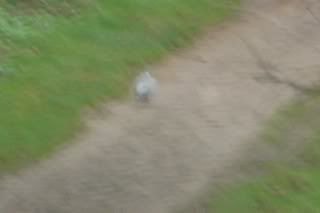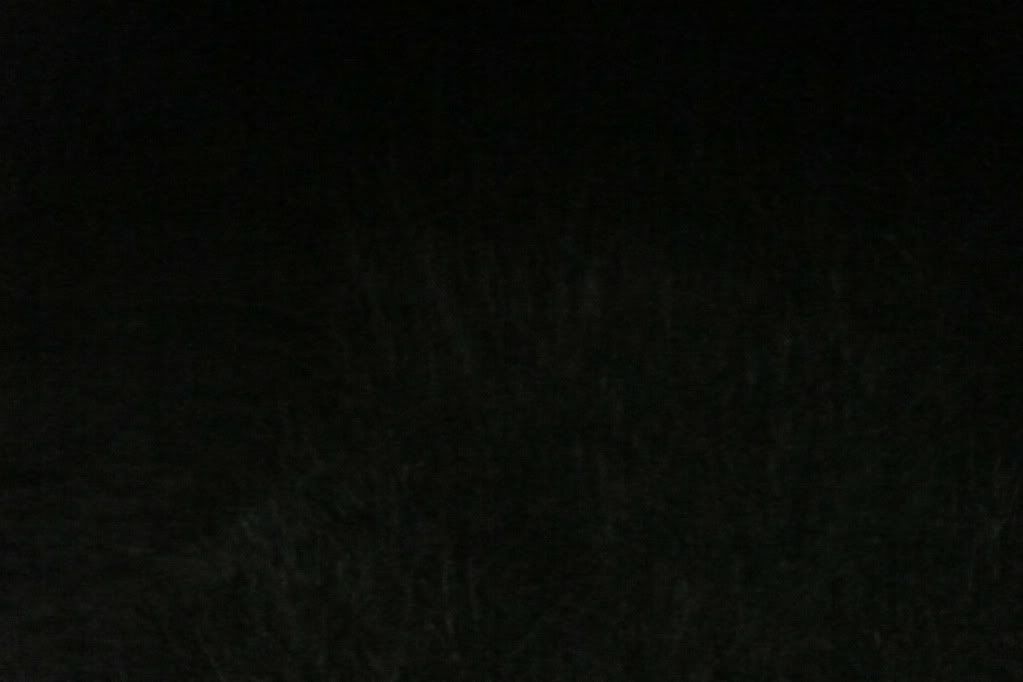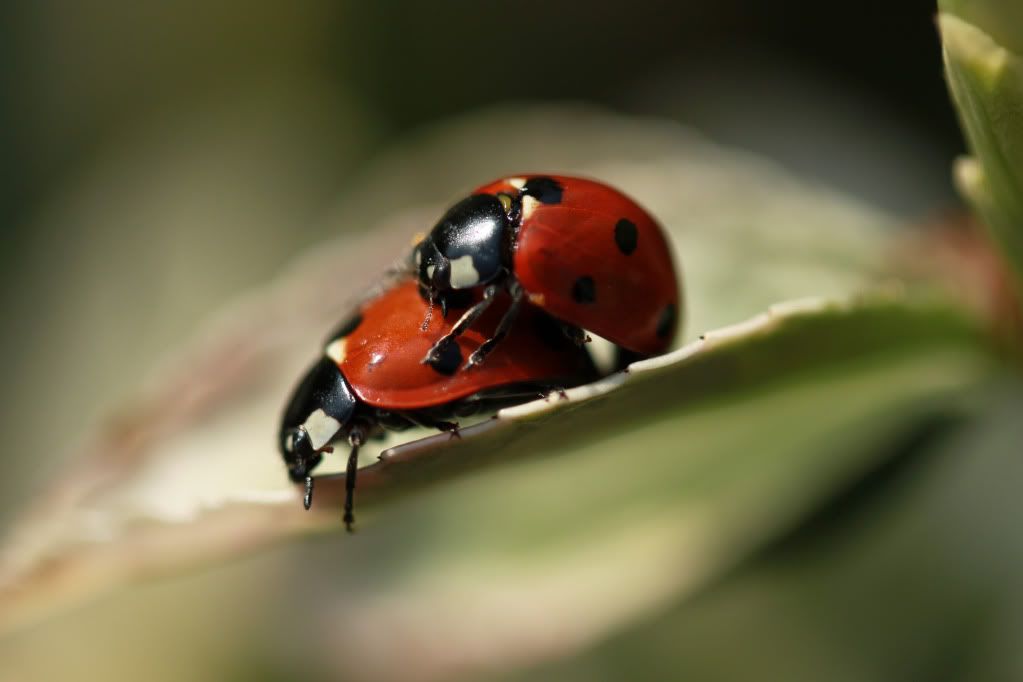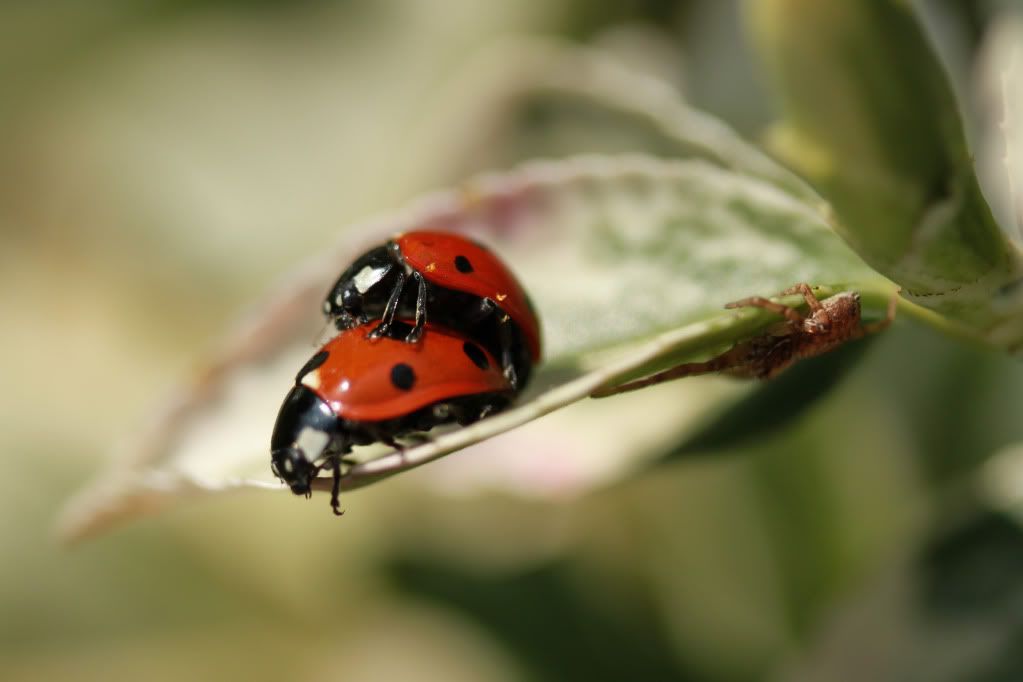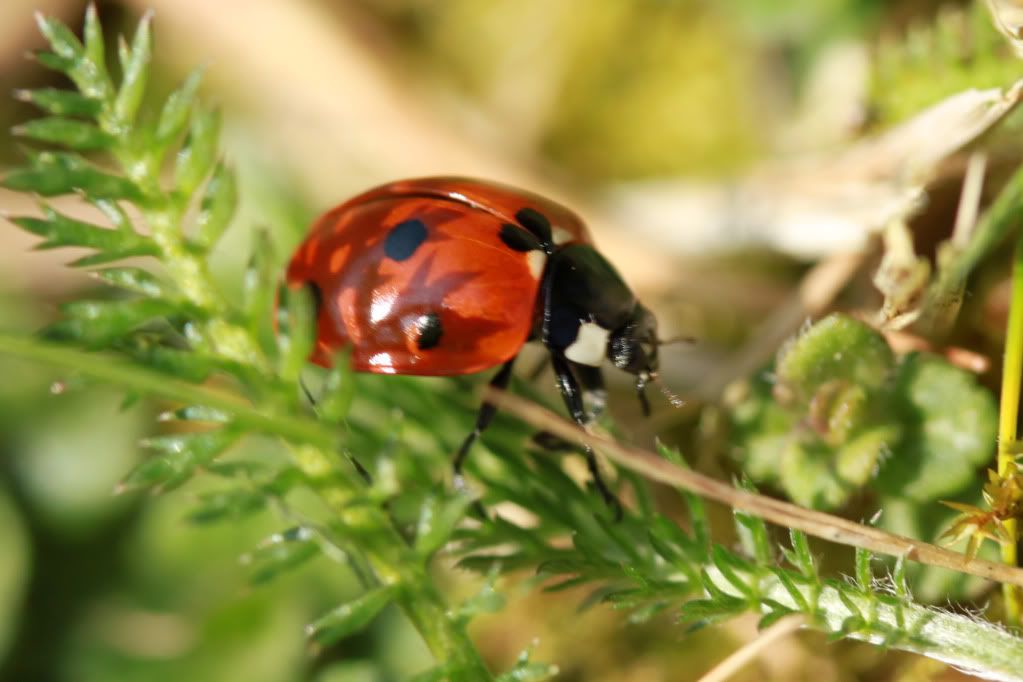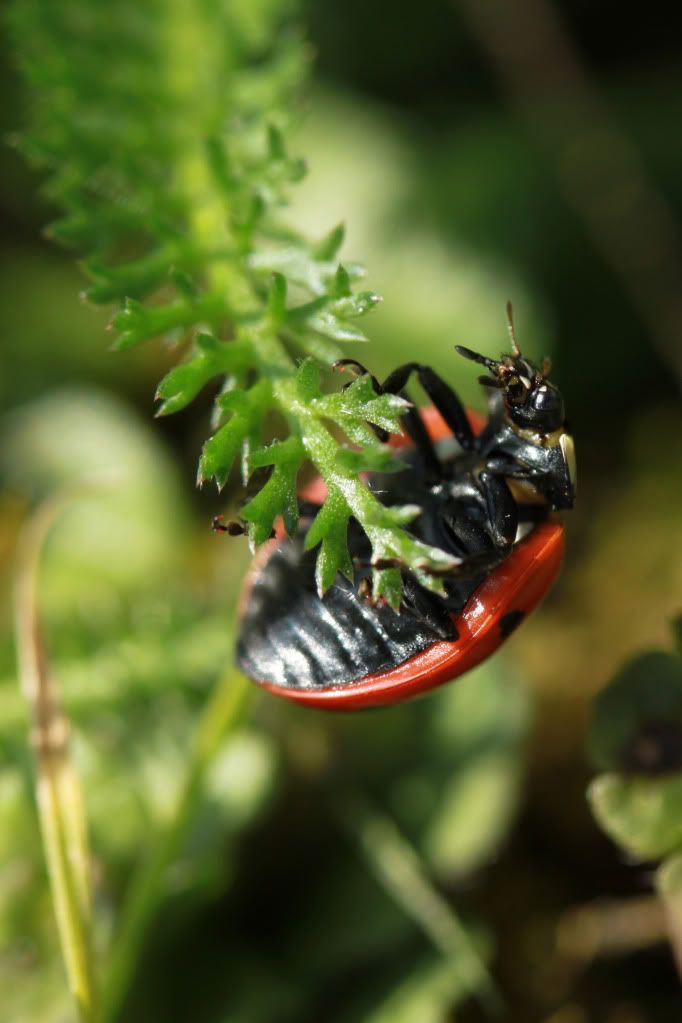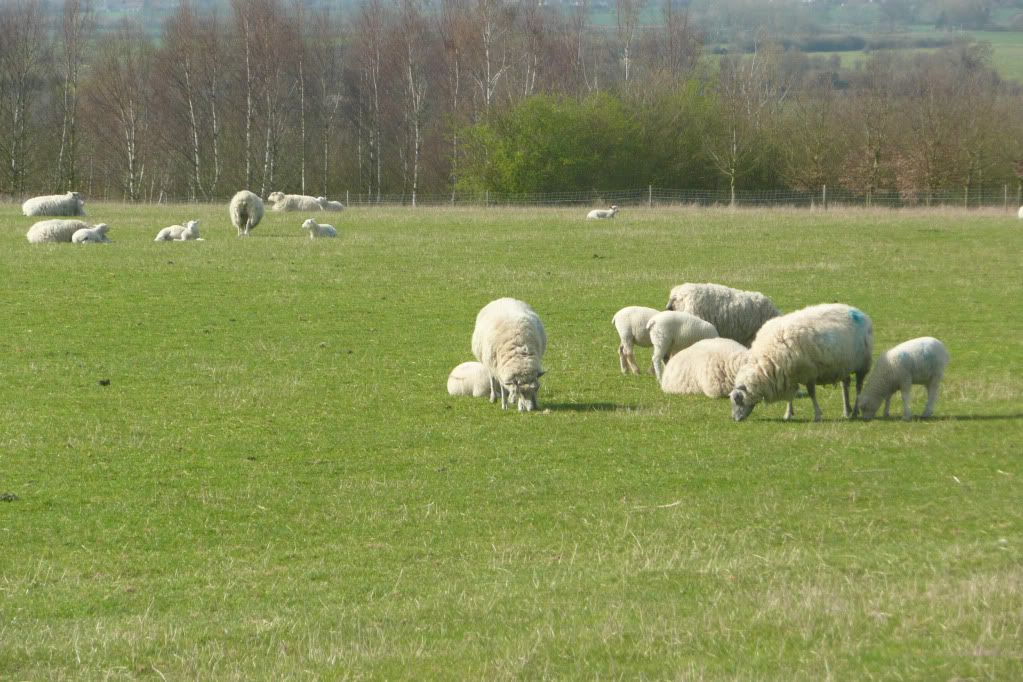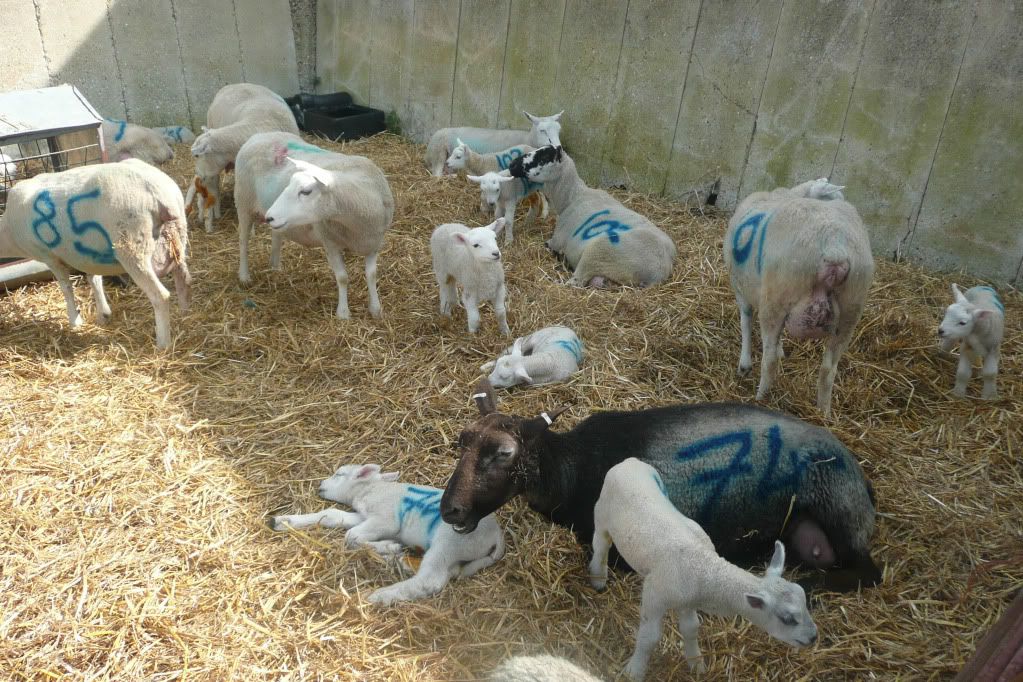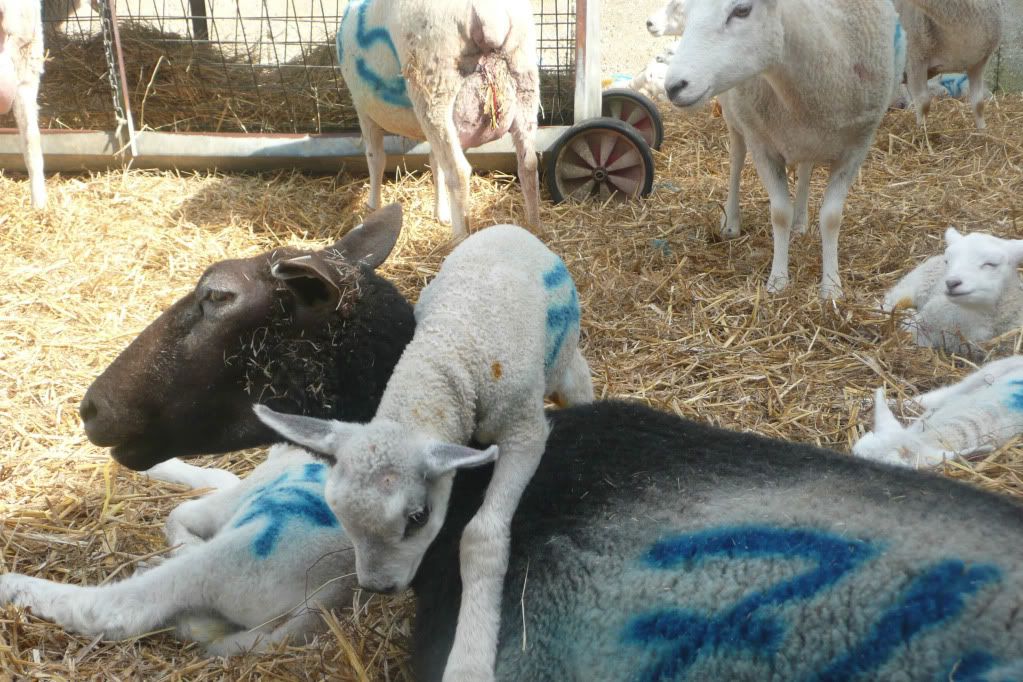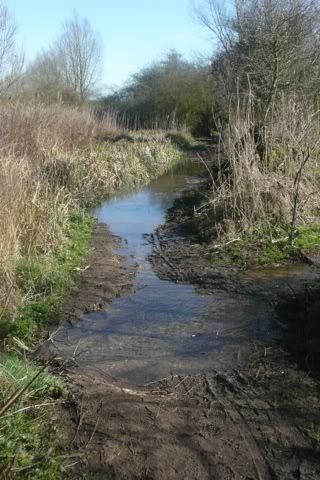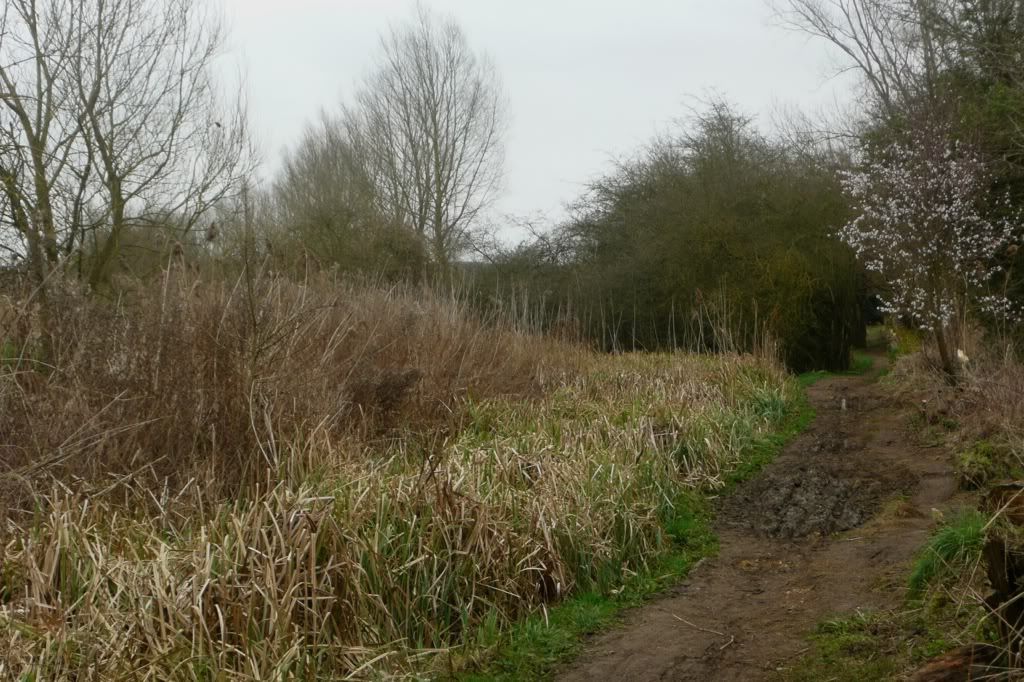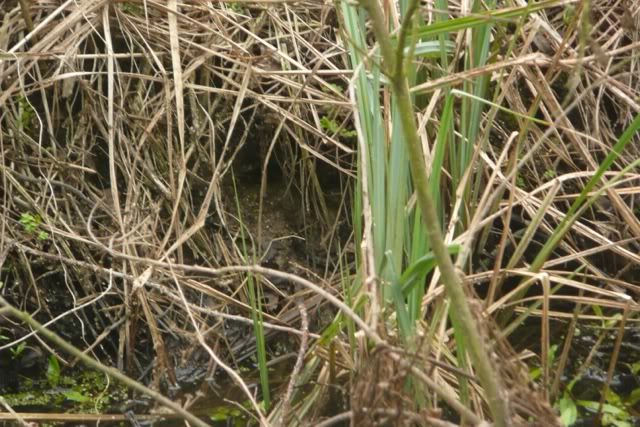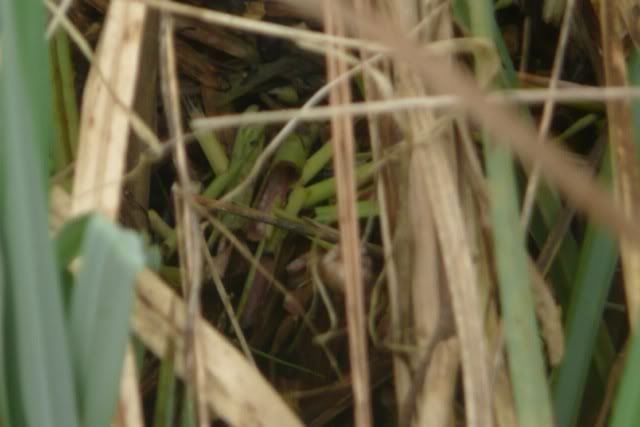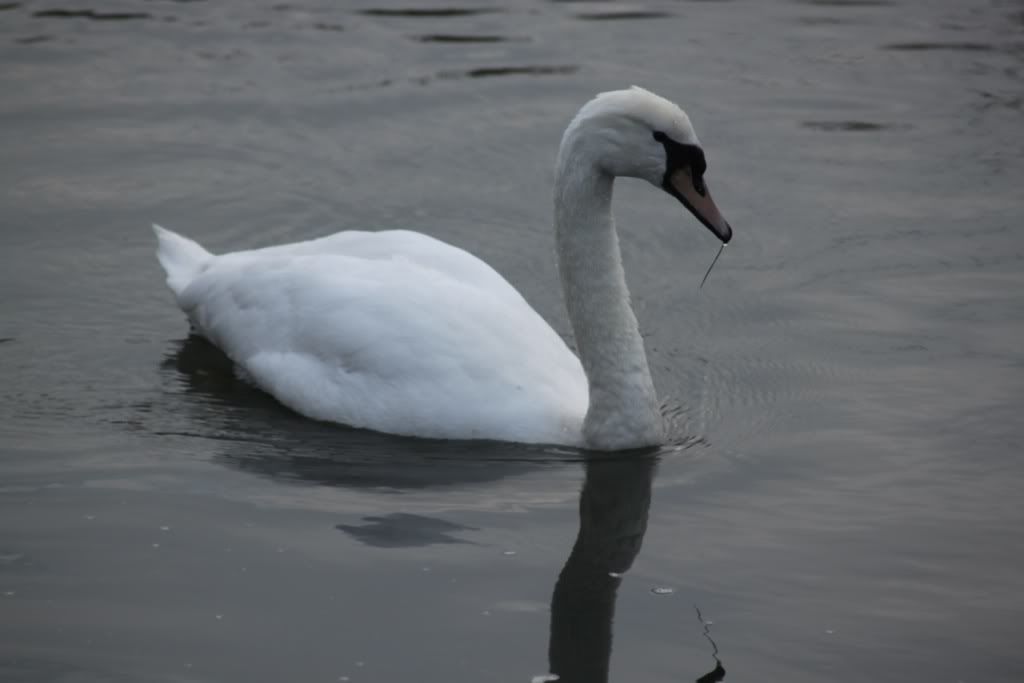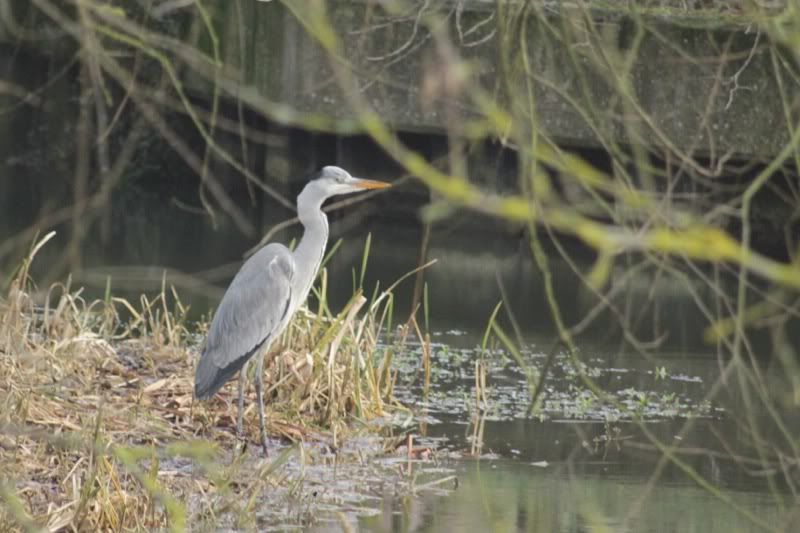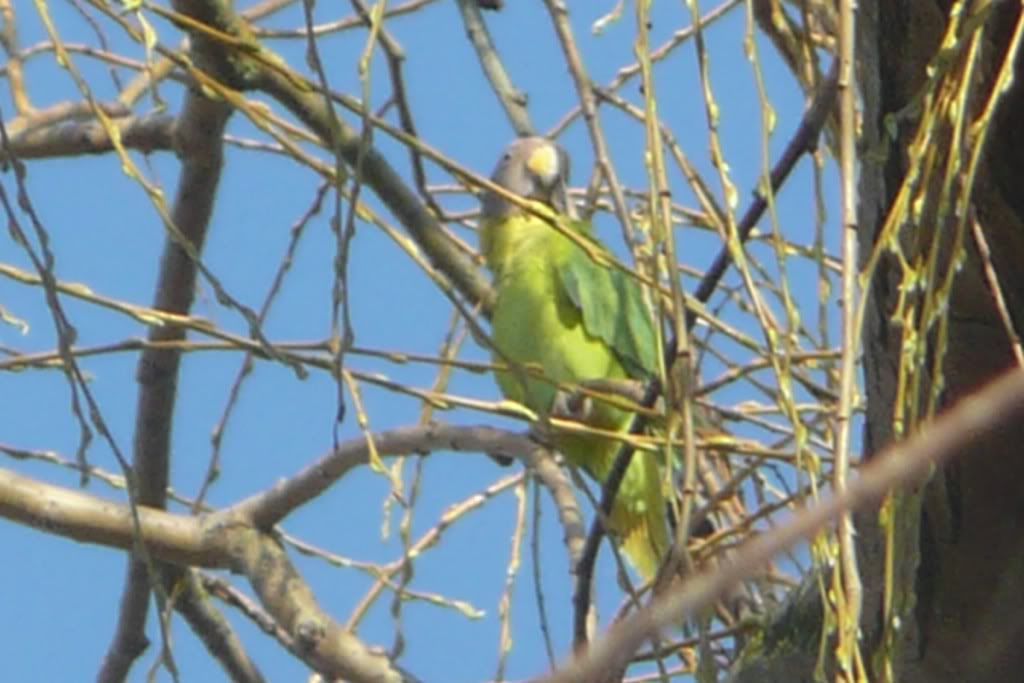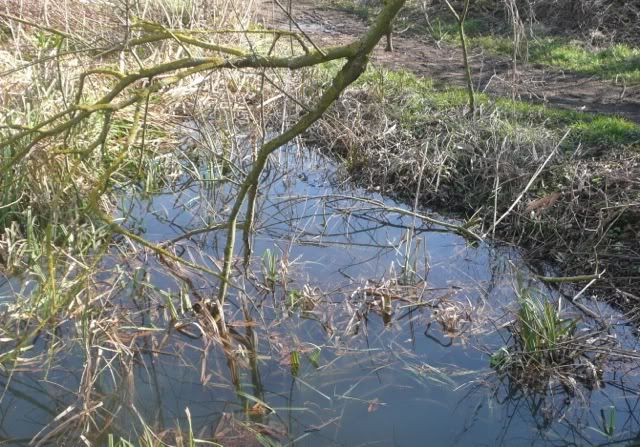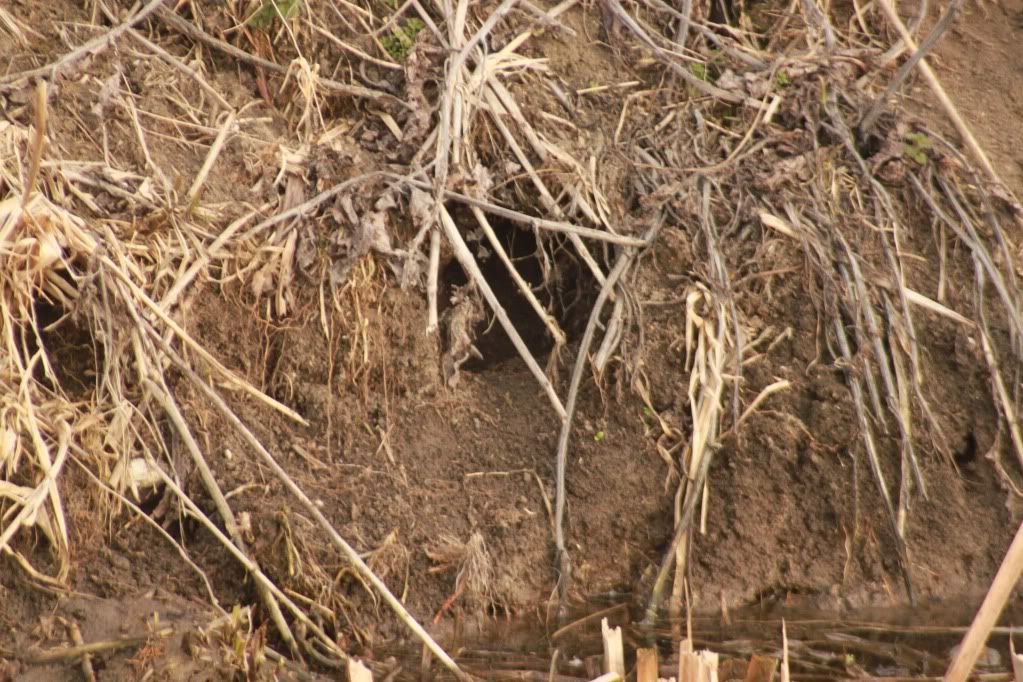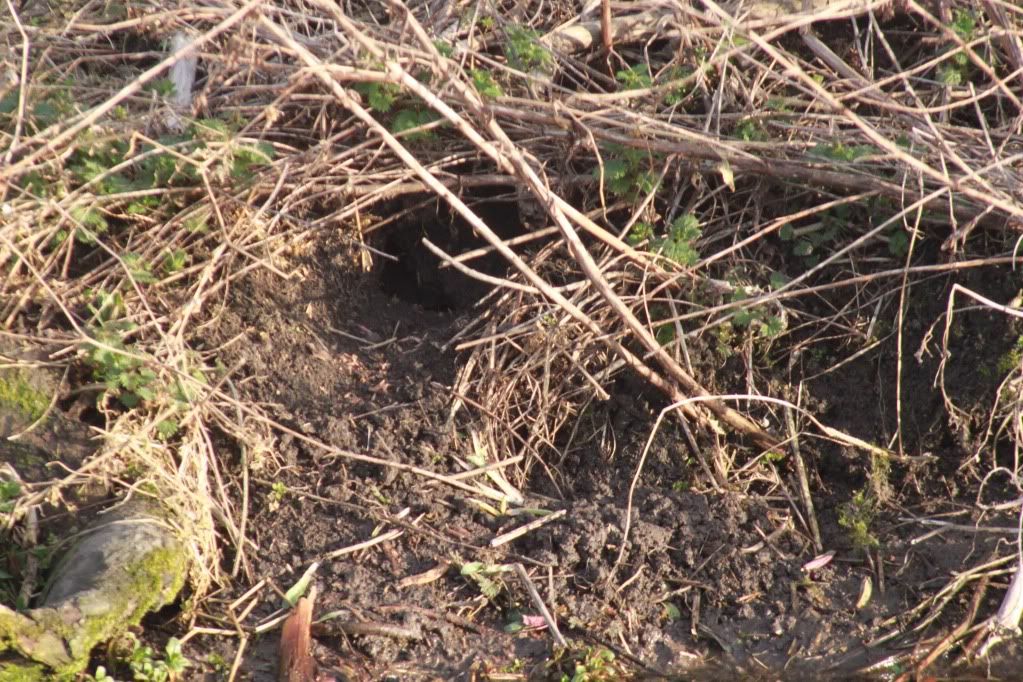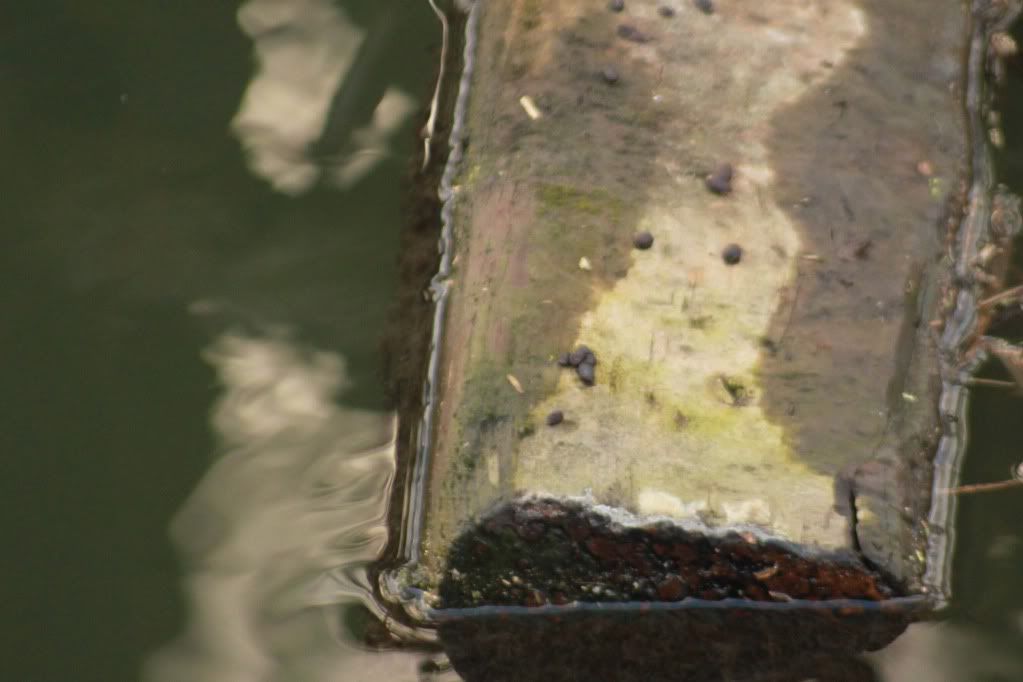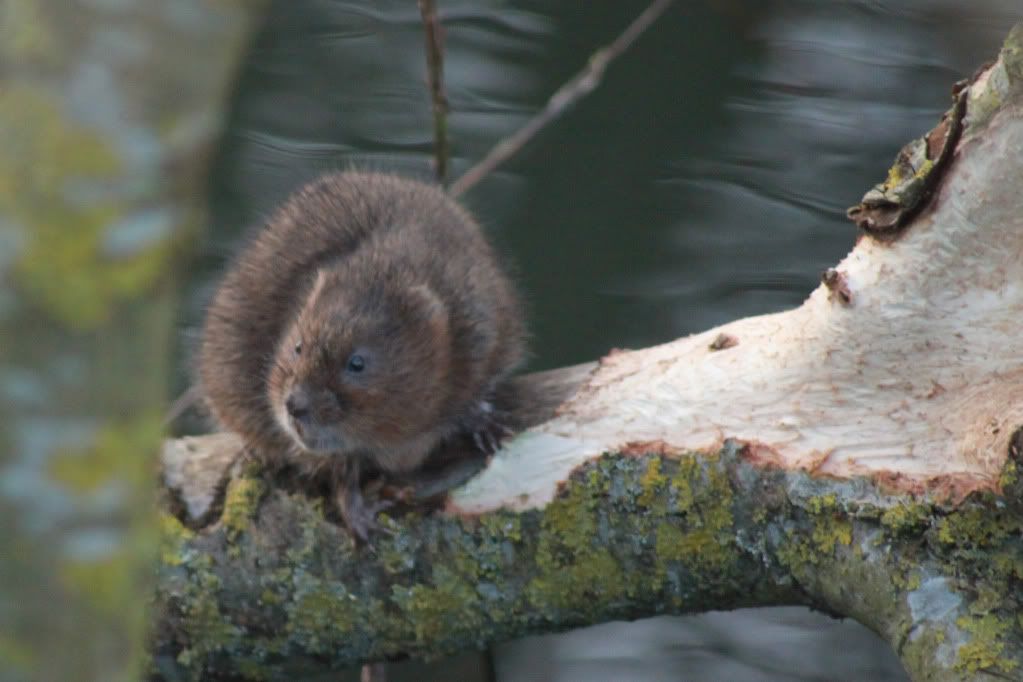Today is April Fools' Day, a day when people play practical jokes on each other. But rather than writing a preposterous post about whales being seen in the Thames or evidence of beavers being found near Abingdon, I thought I would play the joke on myself and share some photos which - for obvious reasons - haven't featured previously in the blog:
The secrets of wildlife photographer are - interesting subject, correct camera settings and good focus, all of which fail in this picture of a wood pigeon:
.
.
Dark badger, on a dark night, in a dark field - with no flash:
.
.
No idea, what this was supposed to be, but whatever it is, it's not in focus:
.
.
Wildlife and other things of interest on and around the river Ock in south Oxfordshire
Saturday 31 March 2012
A loveliness of loving ladybirds
Ladybirds are prolific breeders, a female can lay several thousand eggs each yea. Now having woken from their winter diapause, producing more eggs is exactly what a lot of ladybirds are starting to do.
Bumblebees can take 45 minutes to mate, but ladybirds take it to an extreme, and these 7 spot ladybirds can spend 3 hours to 9 hours mating (http://www.naturescalendar.org.uk/NR/rdonlyres/B7AEA263-F3D3-4C69-8901-B992BFF26819/0/facts_ladybird.pdf).
.
.
Although this particular couple need to be careful, spending so long mating can bring risks, as a spider slowly approaches underneath the leaf:
.
Bumblebees can take 45 minutes to mate, but ladybirds take it to an extreme, and these 7 spot ladybirds can spend 3 hours to 9 hours mating (http://www.naturescalendar.org.uk/NR/rdonlyres/B7AEA263-F3D3-4C69-8901-B992BFF26819/0/facts_ladybird.pdf).
.
.
Although this particular couple need to be careful, spending so long mating can bring risks, as a spider slowly approaches underneath the leaf:
.
Tuesday 27 March 2012
A loveliness of ladybirds...
The recent spring heat wave has provided an opportunity to explore the garden and at the weekend, there was a multitude of ladybirds, who seem to have waken from their diapause (insect hibernation):
.
.
.
They are all seven spot ladybirds, one of the most common in the UK:
.
The collective name for ladybirds is a 'loveliness' and it does seem a suitable noun as the ladybirds took to the air and sought food and other ladybirds
.
.
There are 43 different species of ladybird in the UK, with the native species coming under threat from the invasive harlequin ladybird.
As usual, there is an irony with alien species, the seven spot ladybird has been introduced into North America - which now threatens their native ladybirds.
Sunday 25 March 2012
Spring Lambs
Nothing says spring more than sight of lambs bouncing around in a field, seemingly full of joy. And once again, the Earth Trust (formally the Northmoor Trust) at Little Wittenham opened it's working farm for two weekends, so the public can see the lambs close up.
Whilst the more mature lambs are out in the fields.
.
.
It is the new born lambs that people have come to see:
.
.
.
.
Being cute, endearing and fun has not put people off eating them - the queue for the lamb burgers was surprisingly long
.
.
For anyone who wants to see - or eat - more lambs, the Earth Trust have more lambing days next weekend http://www.earthtrust.org.uk/Explore/LambingWeekends.aspx and the farm has it's blog to document the lambing season: http://www.camillaandroly.blogspot.co.uk/
Whilst the more mature lambs are out in the fields.
.
.
It is the new born lambs that people have come to see:
.
.
.
.
Being cute, endearing and fun has not put people off eating them - the queue for the lamb burgers was surprisingly long
.
.
For anyone who wants to see - or eat - more lambs, the Earth Trust have more lambing days next weekend http://www.earthtrust.org.uk/Explore/LambingWeekends.aspx and the farm has it's blog to document the lambing season: http://www.camillaandroly.blogspot.co.uk/
Friday 23 March 2012
The toads of Barton Fields
Barton fields is a small nature reserve to the east of Abingdon. Managed by Abingdon Naturalists Society, it was designated a Jubilee Wildlife Site in 2002 - one of ten sites in Oxfordshire, created to mark the Queen's Golden Jubilee.
Recently, several ponds have been dug on the site to provide habitat for dragonfly nymphs, frogs and toads.
.
.
And they seem to be having the desired affect, as there has been a lot of toad activity recently, even during the day, when they risk being dried out in the sun, although some are wisely staying in the ponds
.
.
The males who have ventured out have been seeking females and when they find one, they climb on and attach themselves to her, forming an 'amplexus embrace' and they will not let go:
.
.
There is a good reason for this, the male toads desire to breed is so strong that they will clasp onto existing pairs - forming toad balls, like this, consisting of four toads:
.
.
These can be entertaining to watch, as they usually fall over in a heap:
.
.
Breeding always takes place in water, so if this toad ball makes it to the pond, there is a risk that the sheer number of males desperate to breed with the her will result in the female being drowned.
Still, judging by the numbers of toads on a warm spring day, there should be plenty of spawn and tadpoles in the ponds at Barton Fields this year.
Recently, several ponds have been dug on the site to provide habitat for dragonfly nymphs, frogs and toads.
.
.
And they seem to be having the desired affect, as there has been a lot of toad activity recently, even during the day, when they risk being dried out in the sun, although some are wisely staying in the ponds
.
.
The males who have ventured out have been seeking females and when they find one, they climb on and attach themselves to her, forming an 'amplexus embrace' and they will not let go:
.
.
There is a good reason for this, the male toads desire to breed is so strong that they will clasp onto existing pairs - forming toad balls, like this, consisting of four toads:
.
.
These can be entertaining to watch, as they usually fall over in a heap:
.
.
Breeding always takes place in water, so if this toad ball makes it to the pond, there is a risk that the sheer number of males desperate to breed with the her will result in the female being drowned.
Still, judging by the numbers of toads on a warm spring day, there should be plenty of spawn and tadpoles in the ponds at Barton Fields this year.
Saturday 17 March 2012
The resilience of water voles
Two weeks ago, Radley Brook had burst it's banks and the Thames path was flooded and impassable
.
.
Now the water level has subsided and the weather has been so dry that the path is now passable again:
.
.
So it is an opportunity to try and find if any water voles are still there and have survived the recent flooding. In the bank, it looks like there might be a burrow:
.
.
And in-between the sedge, a collection of small cut grass stems, a definite sign of water vole feeding.
.
.
It seems, despite the weather, the water voles of Radley Brook are still resilient - for the time being - to the many hardships that water voles suffer.
.
.
Now the water level has subsided and the weather has been so dry that the path is now passable again:
.
.
So it is an opportunity to try and find if any water voles are still there and have survived the recent flooding. In the bank, it looks like there might be a burrow:
.
.
And in-between the sedge, a collection of small cut grass stems, a definite sign of water vole feeding.
.
.
It seems, despite the weather, the water voles of Radley Brook are still resilient - for the time being - to the many hardships that water voles suffer.
Saturday 10 March 2012
River birds
Last year, a pair of mute swans tried to set up a nest along the river (http://viewsoftheock.blogspot.com/2011/04/swans.html), but unfortunately did not successfully breed . This year, a swan has arrived, but it is on it's own.
Adult swans form partnerships for life and divorce is very rare, so either this is a new swan or last years pair have separated, possibly due to the unsuccessful breeding.
What ever the reason it looks a somewhat sad and lonely sight as it swims solitary up and down the river.
Grey herons are occasional visitors to the river and they can be seen stood silently by the river as they look for their prey, usually small fish and amphibians, but they will also take river birds like moorhens and small mammals - including water voles
.
.
A somewhat more unusual sight is a parrot, squawking at the top of one of the tallest trees by the river (seen Sunday 26th February):
.
.
Of course parrots are not native to the UK, but ring necked parakeet's released in the 1980's and 90's have become so numerous in the south of England - they can be seen in Hyde Park in London and Windsor Great Park - they have become a nuisance
According to the Oxfordshire Bird Blog a ring necked parakeet was seen at the Drayton Road Allotments the next day.
With the grey head and yellow beak, it does not look like a parakeet - which have green body, head and a read beak (http://www.rspb.org.uk/wildlife/birdguide/name/r/ringneckedparakeet/) , so this is may well be a recent escapee.
If it is, can it survive? The parakeets have demonstrated it is possible for exotic birds to flourish in the UK, but there is a lack of fruit on the Ock (the fieldfares and redwings have eaten it), so it will have to find a new place to squawk, and as it wasn't there last weekend, maybe it has...
Tuesday 6 March 2012
Not so good on Radley Brook
Over the past few years, this blog has focused on the trials and tribulations of two water vole colonies and whilst things are currently looking good for those one River Ock (), life is a lot harder for those on Radley Brook.
Running between the Barton Fields nature reserve and the River Thames, it is more of a ditch with stagnant water than an actual brook, but during summer, much fun can be had feeding the water voles an apple core or two.
However, it's proximity to the Thames can cause problems - the river is corridor for mink and this is where several have been seen in recent years
And whilst there are almost certainly in otters in the river, the river is so wide that they are unlikely to offer any protection to the water voles.
Although at the moment, there are other problems for any water voles, the heavy rain on Sunday has meant the river has burst it's banks and flowed into the brook, which is now very high:
.
.
With such a rapid increase in water level, any water voles trying to define their territory or make and renovate their burrows could have been drowned.
And not only is the brook very high, but the Thames Path which runs alongside the brook is underwater and impassable
.
.
Water vole colonies are fragile, and even though things look very precarious, experience says - when it comes to water voles - never to give up hope:
Running between the Barton Fields nature reserve and the River Thames, it is more of a ditch with stagnant water than an actual brook, but during summer, much fun can be had feeding the water voles an apple core or two.
However, it's proximity to the Thames can cause problems - the river is corridor for mink and this is where several have been seen in recent years
And whilst there are almost certainly in otters in the river, the river is so wide that they are unlikely to offer any protection to the water voles.
Although at the moment, there are other problems for any water voles, the heavy rain on Sunday has meant the river has burst it's banks and flowed into the brook, which is now very high:
.
.
With such a rapid increase in water level, any water voles trying to define their territory or make and renovate their burrows could have been drowned.
And not only is the brook very high, but the Thames Path which runs alongside the brook is underwater and impassable
.
.
Water vole colonies are fragile, and even though things look very precarious, experience says - when it comes to water voles - never to give up hope:
Sunday 4 March 2012
Bumper year for water voles?
There is plenty of evidence of water vole activity along the river at the moment, the are many freshly dug burrows in the river bank (probably old burrows being renovated).
.
.
Some of the burrows have small cut grass stems in front of them - evidence of water vole feeding.
.
.
The main give away of increased activity are obvious latrines, water voles define their territory by using their droppings and are most evident during the breeding season:
.
.
Of course, the most obvious sign of water vole activity is actually seeing one and this one is making up for the lack of edible river fauna by eating the bark and lichen from one of the overhanging willow trees.
.
.
Even though spring has not yet started, there does seem to be plenty of water vole activity already, perhaps there are several reasons....
The main contributing factor to the 90% decline in the UK water vole population since the 1950's is the release of american mink from fur farms (now banned in the UK) and mink have been previously seen by the nearby river Thames.
Although mink and otters can co-exist (the mink become diurnal - active during daylight) last years breeding female otter would almost certainly not tolerated a such a predator close to her cubs and would either kill or chase off a mink - to the benefit of the water voles.
Water voles don't hibernate, so have to forage during winter - feeding off roots, tubers and as above bark and lichen off the overhanging willow trees. However, the mild winter (with the exception of one or two weeks) has meant the voles would not have perished through the cold and would have more opportunity to feed.
Another common cause of mortality for water voles is drowning (perhaps surprising for an animal which choses to live by rivers), they can often be trapped in their burrows when water levels rise quickly. Something which often occurs on the Ock. So whilst the potential draught in the south of England could cause problems for other wildlife - especially amphibians (http://www.bbc.co.uk/nature/17130206) - it could benefit the water voles on the Ock.
As a result of these, could 2012 will be a bumber year for water voles on the Ock?
.
.
Some of the burrows have small cut grass stems in front of them - evidence of water vole feeding.
.
.
The main give away of increased activity are obvious latrines, water voles define their territory by using their droppings and are most evident during the breeding season:
.
.
Of course, the most obvious sign of water vole activity is actually seeing one and this one is making up for the lack of edible river fauna by eating the bark and lichen from one of the overhanging willow trees.
.
.
Even though spring has not yet started, there does seem to be plenty of water vole activity already, perhaps there are several reasons....
The main contributing factor to the 90% decline in the UK water vole population since the 1950's is the release of american mink from fur farms (now banned in the UK) and mink have been previously seen by the nearby river Thames.
Although mink and otters can co-exist (the mink become diurnal - active during daylight) last years breeding female otter would almost certainly not tolerated a such a predator close to her cubs and would either kill or chase off a mink - to the benefit of the water voles.
Water voles don't hibernate, so have to forage during winter - feeding off roots, tubers and as above bark and lichen off the overhanging willow trees. However, the mild winter (with the exception of one or two weeks) has meant the voles would not have perished through the cold and would have more opportunity to feed.
Another common cause of mortality for water voles is drowning (perhaps surprising for an animal which choses to live by rivers), they can often be trapped in their burrows when water levels rise quickly. Something which often occurs on the Ock. So whilst the potential draught in the south of England could cause problems for other wildlife - especially amphibians (http://www.bbc.co.uk/nature/17130206) - it could benefit the water voles on the Ock.
As a result of these, could 2012 will be a bumber year for water voles on the Ock?
Subscribe to:
Posts (Atom)
